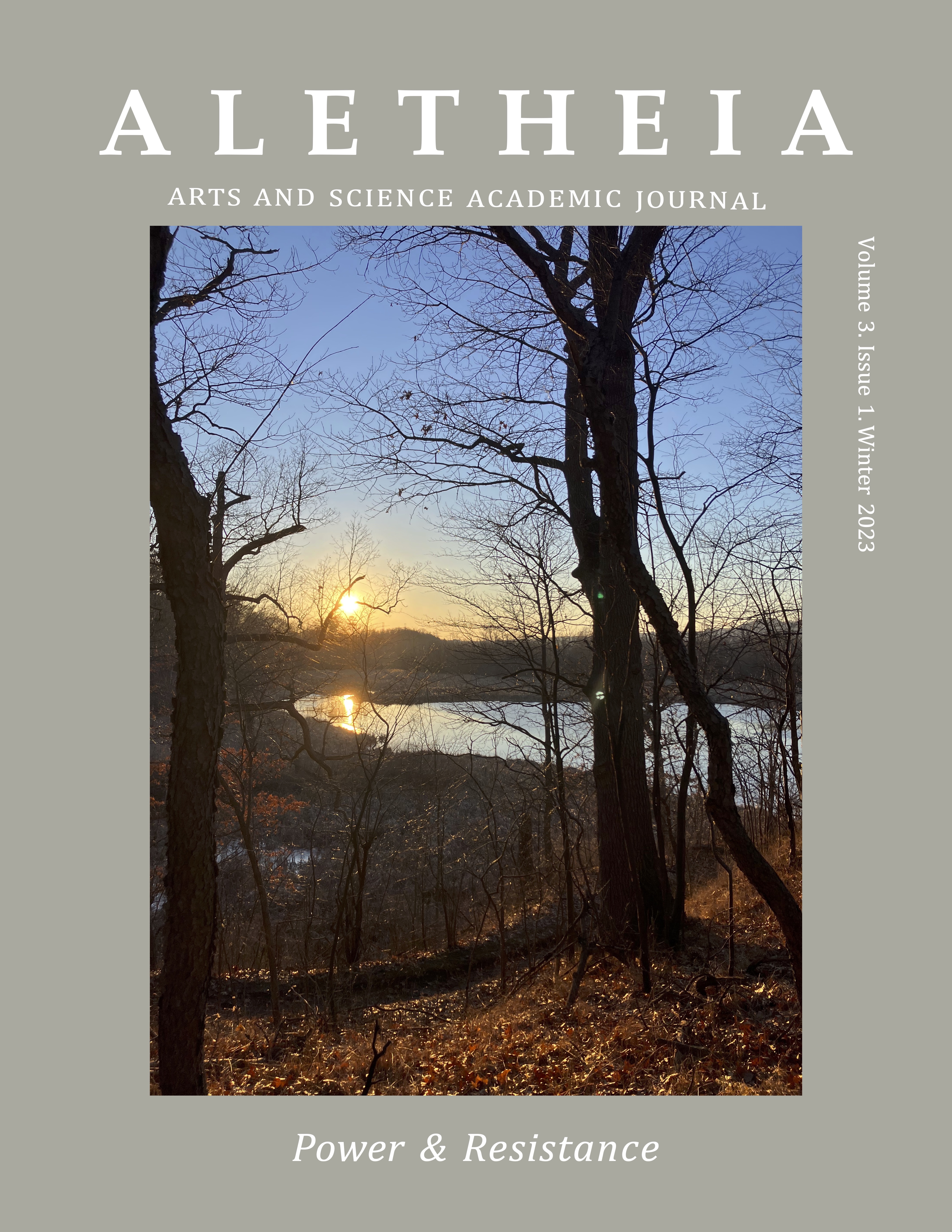Something in the air
An intersectional investigation of environmental racism in Canada
DOI :
https://doi.org/10.15173/a.v3i1.3406Résumé
This paper considers the issue of environmental racism as it relates to Indigenous and Black communities in Canada. Although the climate crisis affects us all, certain communities have felt the effects of environmental degradation more acutely and for a longer period. Environmental policy or practice that disproportionately disadvantages a racial group is an example of environmental racism. The article examines different policy responses to environmental racism in a Canadian context. The paper looks at proposed avenues for addressing environmental racism through the Charter of Rights and Freedoms, Private Members Bills, Senate Bills or the new Federal Housing Advocate position associated with the Canadian Human Rights Commission. It also examines a number of grassroots initiatives taking action against environmental racism. The article argues that having the right to a healthy environment encoded in the Charter is the best option for policy reform and that grassroots organizations working in coalitions continue to make meaningful social change as the policy battle continues.
How it fits theme:
The political power of the Canadian government has important implications for all citizens, but that power is not exerted equally against all sectors of society. There is implicit power in policy and practice that has lived consequences for those living in communities that experience systemic inequalities in healthcare, employment, and environment. However, these systemic barriers do not render individuals powerless. Grassroots movements are the fundamental origin of all civil rights victories experienced thus far, and will continue to have an integral role in changing the balance of power for generations to come. The example of environmental racism in Canada is a good place to examine the role of state power in racialized communities. At the same time, the individuals fighting against environmental racism through policy and social movements simultaneously are an inspiring example of resistance in praxis.
Références
Bill C-230 (Historical). (n.d.). openparliament.ca. Retrieved December 8, 2022, from https://openparliament.ca/bills/43-2/C-230/
Bill C-438 (Historical). (n.d.). openparliament.ca. Retrieved December 8, 2022, from https://openparliament.ca/bills/42-1/C-438/
Black Lives Matter. (2021, August 30). Climate Justice is Racial Justice. https://blacklivesmatter.com/climate-justice-is-racial-justice/
Borunda, A. (2021, February 24). The origins of environmental justice—and why it's finally getting the attention it deserves. National Geographic. https://www.nationalgeographic.com/environment/article/environmental-justice-origins-why-finally-getting-the-attention-it-deserves
Boyd, D. R. & Macfarlane, E. (2014, March 3). Should environmental rights be in the constitution? Policy Options. https://policyoptions.irpp.org/fr/magazines/second-regard/boyd-macfarlane/
Bullard, R. D. (2003). Confronting Environmental Racism in the 21st Century. Race, Poverty & the Environment, 10(1), 49–52. http://www.jstor.org/stable/41554377
Canadian Human Rights Commission. (2022, February 4). Canadian Human Rights Commission welcomes Canada's first Federal Housing Advocate. https://www.chrc-ccdp.gc.ca/en/resources/canadian-human-rights-commission-welcomes-canadas-first-federal-housing-advocate
Canadian Human Rights Commission (2022, May 3). Federal Housing Advocate – Frequently asked questions. https://www.housingchrc.ca/en/federal-housing-advocate-frequently-asked-questions
Chalifour, N. J. (2015). Environmental Justice and the Charter: Do Environmental Injustices Infringe Sections 7 and 15 of the Charter? Canadian Legal Information Institute. https://canlii.ca/t/t232
Collins, L. M. (2015). Safeguarding the long durée: Environmental rights in the Canadian Constitution. Supreme Court Law Review: Osgoode's Annual Constitutional Cases Conference, 71(1), 519-539. http://digitalcommons.osgoode.yorku.ca/sclr/vol71/iss1/20
Defending the rights of Chemical Valley residents – Charter Challenge: Lockridge and Plain v Director, Ministry of the Environment et al. (n.d.). Ecojustice. https://ecojustice.ca/case/defending-the-rights-of-chemical-valley-residents-charter-challenge/
Department of Justice Canada. (2022, April 14). Charterpedia. Government of Canada. https://www.justice.gc.ca/eng/csj-sjc/rfc-dlc/ccrf-ccdl/check/index.html
Dhillon, C. & Young, M. G. (2010). Environmental Racism and First Nations: A Call for Socially Just Public Policy Development. Canadian Journal of Humanities and Social Sciences, 1(1), 23-37. https://www.researchgate.net/publication/228226535
Ecojustice. (2007). Exposing Canada's Chemical Valley. https://ecojustice.ca/wp-content/uploads/2015/09/2007-Exposing-Canadas-Chemial-Valley.pdf
ENRICH Project. (2014). In Whose Backyard? [Film] Pink Dog Productions. https://www.enrichproject.org/resources/#IWB-Video
Gidimt'en land defenders. (2022, February 7). Militarization of Wet'suwet'en lands and Canada's ongoing violations. https://static1.squarespace.com/static/5c51ebf73e2d0957ca117eb5/t/620058664c6ee459921ddd70/1644189799141/Expert+Mechanism+on+the+Rights+of+Indigenous+Peoples+Wet%27suwet%27en+Submission+Jan+2022.pdf
House of Commons of Canada. (2021, June 22). Bill C-230: An Act respecting the development of a national strategy to assess, prevent and address environmental racism and to advance environmental justice. Forty-third Parliament. https://www.parl.ca/DocumentViewer/en/43-2/bill/C-230/second-reading
House of Commons of Canada (2019, April 5). Bill C-438: An Act to enact the Canadian Environmental Bill of Rights and to make related amendments to other Acts. Forty-second Parliament. https://www.parl.ca/DocumentViewer/en/42-1/bill/C-438/first-reading
Kerrich, Z. & Wagner, H. (2021, December 4) Grassy Narrows First Nation (Asubpeechoseewagong Netum Anishnabek): Water management for the future. Urban Water Atlas. https://www.urbanwateratlas.com/2021/12/04/grassy-narrows-first-nation-asubpeechoseewagong-netum-anishinabek-water-management-for-the-future/
Kestler-D'Amours, J. (2020, March 1). Understanding the Wet'suwet'en struggle in Canada. Aljazeera. https://www.aljazeera.com/news/2020/3/1/understanding-the-wetsuweten-struggle-in-canada
King, L., Troian, M., Ekelund, B., Yadav, A., Thakur, A., & Chan T. S. (2021). How an Ontario paper mill poisoned nearby First Nations. National Observer. https://www.nationalobserver.com/2021/09/01/how-ontario-paper-mill-poisoned-nearby-first-nations
LEGISinfo. (n.d.). S-5: An Act to amend the Canadian Environmental Protection Act, 1999, to make related amendments to the Food and Drugs Act and to repeal the Perfluorooctane Sulfonate Virtual Elimination Act. 44th Parliament, 1st session. Retrieved December 15, 2022, from https://www.parl.ca/legisinfo/en/bill/44-1/s-5
The right to a healthy environment: Canada's time to act. (n.d.). Ecojustice. https://ecojustice.ca/wp-content/uploads/2015/04/Right_to_a_healthy_environment_FINAL.pdf
Senate of Canada. (2022, June 22). Bill S-5: An Act to amend the Canadian Environmental Protection Act, 1999, to make related amendments to the Food and Drugs Act and to repeal the Perfluorooctane Sulfonate Virtual Elimination Act. Forty-fourth Parliament. https://www.parl.ca/DocumentViewer/en/44-1/bill/S-5/third-reading
Shah, S. (n.d.). Wet'suwet'en Explained. The Indigenous Foundation. https://www.theindigenousfoundation.org/articles/wetsuweten-explained
Teelucksingh, C. (2020, November 23). The Canadian Environmental Justice Movement Needs Black Lives Matter. NiCHE. https://niche-canada.org/2020/11/23/the-canadian-environmental-justice-movement-needs-black-lives-matter/
UN News. (2022, July 28). UN General Assembly declares access to clean and healthy environment a universal right. United Nations. https://news.un.org/en/story/2022/07/1123482
Waldron, I. (2018). There's something in the water: Environmental racism in Indigenous & Black communities. Fernwood Publishing.
Whyte, K. (2020). Indigenous environmental justice: Anti-colonial action through kinship. In B. Coolsaet (Ed), Environmental justice: Key issues (pp. 266-278). Routledge. https://doi.org/10.4324/9780429029585
Téléchargements
Publié-e
Numéro
Rubrique
Licence
(c) Tous droits réservés Aletheia 2023

Cette œuvre est sous licence Creative Commons Attribution - Pas d'Utilisation Commerciale - Pas de Modification 4.0 International.
All Rights Reserved





